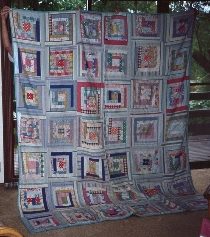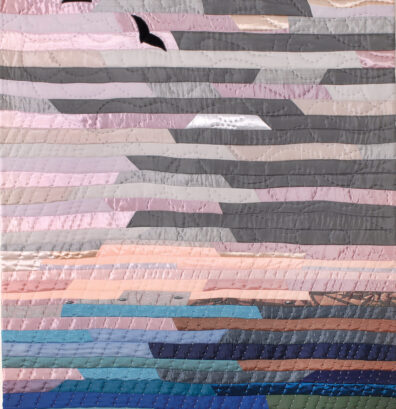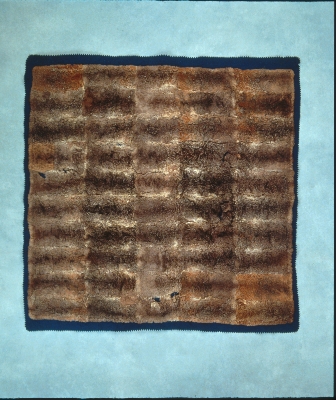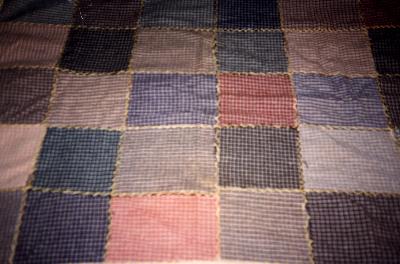History
The quilt is called 'Loved' [and] was given to the present owner's mother who was a nurse at the Morisset Mental Hospital, NSW Australia.
"The quilt was made by an immigrant Yugoslavian lady - name unknown. The Yugoslavian lady was a patient at Morisset Mental Hospital, and I base the date on the type and pattern of the materials and the fact that she was an immigrant. It is sometimes used as a bedcover and sometimes as display, but mostly just folded and refolded as some materials are very fragile. The quilt had been cut in two (to make single bed covers) and many fabrics were worn and fragile. To restore the quilt I replaced the blanket filling with flannelette because it was lighter, replaced some fabrics in the top and added a green floral to the backing… In a corner of the backing is a label made from the original green headcloth which bears the stamp F 3. This stands for Ward Female 3. On the label, I have listed the names of those who helped in the restoration. My mother gave me the quilt. She worked at Morisset Mental Hospital as a nursing sister from the late 1930's to her retirement about the mid 1960's. She worked to support my brothers and myself, we lived with our grandparents, firstly at Gladesville then at Manly, when our grandfather retired. I called the quilt 'Loved' when I restored it and exhibited it in our Quilt Show 1992. The name is self-explanatory really, but has a lot to do with remembering my mother and the then unknown Yugoslavian immigrant maker... …As my mother was 90 when she died, there are not many of her contemporaries left and if so able to remember or relate. However I did track down a couple and they both independently remembered the lady... WARD FEMALE 3 was a refractory ward - meaning the women were violent. It was supposedly for epileptics but according to one source, they were the minority. There was definitely no occupational therapists at that time. [The lady] was apparently very talented at sewing, embroidery and crochet as were many of the patients. They could look at something and copy it. The nurses supplied them with wool and other materials. One source said that many of the young nurses acquired their 'glory boxes' this way. I think they gave them small amounts of money or bought them little comforts in exchange. The reality was though that this was an initiative to give the women something to do, to occupy them, indeed therapy. Many of the patients ... never had a visitor. They had no money, nowhere to spend it and no little luxuries. The government supplied all things down to clothing which was made in the sewing room - distinct from WARD F 3. In WARD F 3 they had some old treadle machines… I assume the nurses scrounged the materials from the sewing room. The green backing on my quilt reminds me of hospital counterpanes... I understand [she] spoke only broken English and sometimes didn't communicate much at all. One can only wonder what she went through - her experiences of war- her trip out to Australia - being a migrant here - and her final destination."
[Doreen Carter, Sydney, 1995]
Name of patient withheld
Description
The pattern is log cabin and it is made from dress materials and pyjama flannelette. The original filling was a heavy woollen blanket (now flannelette) and the backing is green headcloth - all government issue.
With its restoration, the backing was supplemented with a green floral, and the quilt is now tied. The quilt is machine pieced, some restoration work is done by hand.
2260 x 1920mm



